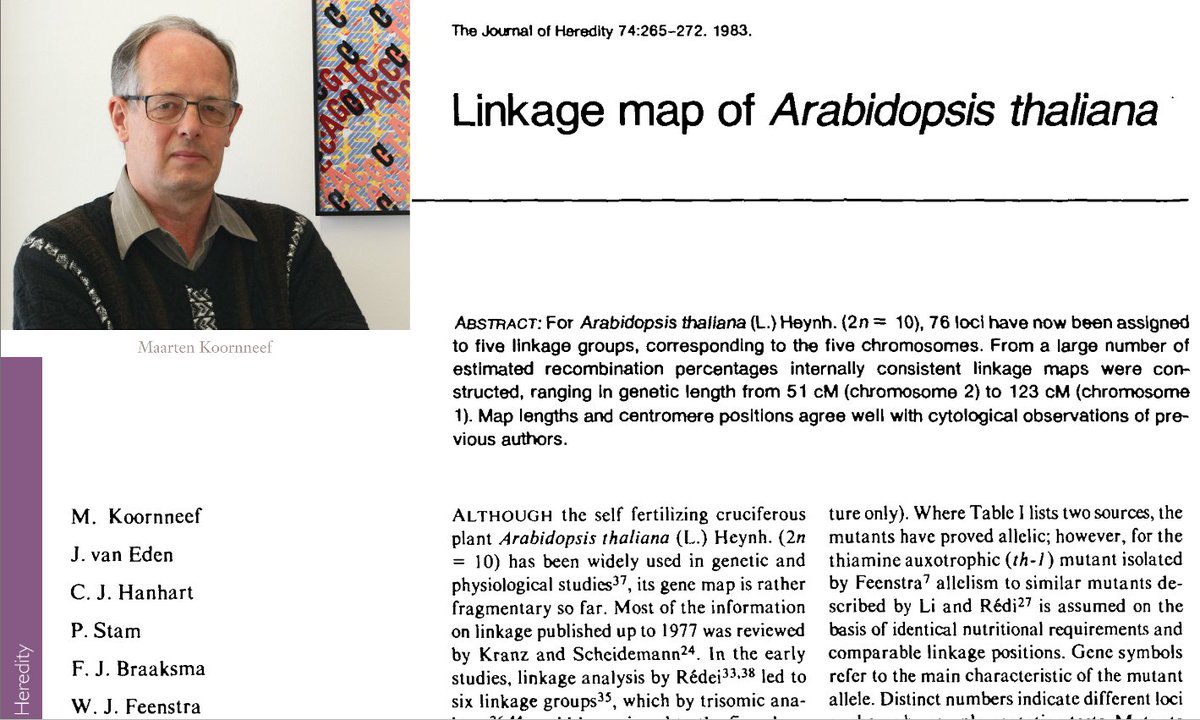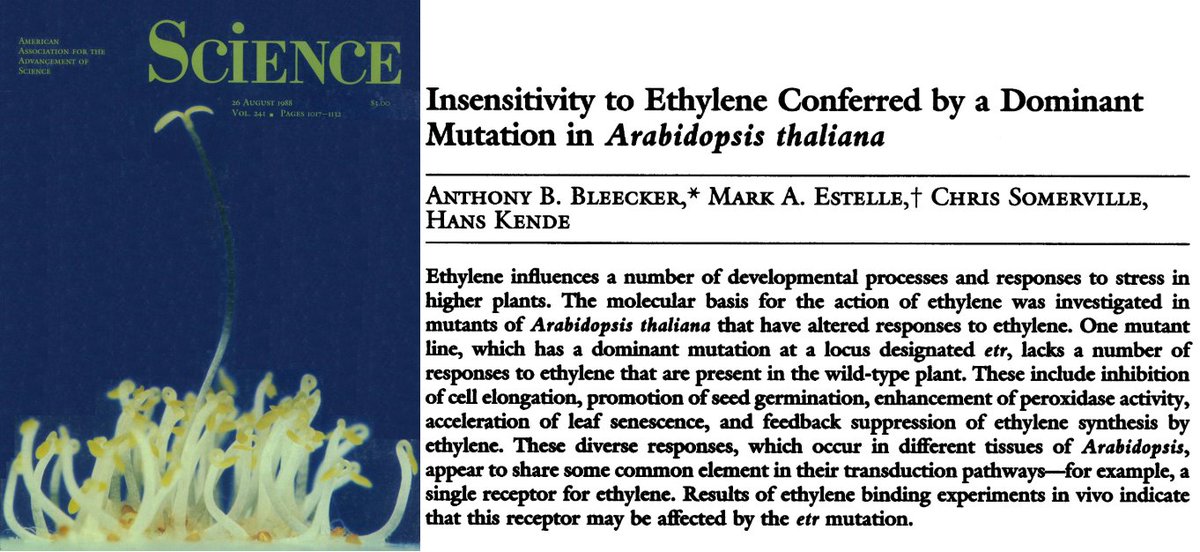#PlantScienceClassics #16: A linkage map of Arabidopsis thaliana. In 1983 the legendary Maarten Koornneef published a genetic map of A. thaliana, the basis for genetic work & an important contribution towards the acceptance of Arabidopsis as plant model. doi.org/10.1093/oxford… 

In the early 1980s scientists finally adopted A. thaliana as model plant. At this point, several mutants were available, but their positions in the genome were mostly unknown. This was years before genome sequences became available,&genetic maps were still based on recombination.
Arabidopsis pioneer György Rédei did linkage analyses with 14 loci in the 1960s, but his genetic map from 1965 suggested 6 linkage groups – 1 more than chromosomes. Curiously, A. D. McKelvie created another map in parallel - & found 4 groups, 1 less than chromosomes. 



In the discussion after McKelvie’s presentation,Rédei points out the difficulty of the job,& asks for more people to get involved in creating a map.However,his call went unanswered,& he was unable to get funding for this.Only 20 years later did Maarten Koornneef take up the work. 

In the same discussion, Rédei also points out the availability of trisomic mutants which can be used to link linkage groups to chromosomes. Suzanne Lee-Chen & Lotti Steinitz-Sears from Rédei’s Department @Mizzou used these in 1967 to link 4 of Rédei’s 6 groups to chromosomes. 

Koornneef built his own mapping work on their paper, and in 1979 finally linked Rédei’s 6 groups to the 5 chromosomes of Arabidopsis. Since starting his PhD-studies in @WURplant, Koornneef had isolated many more mutants & now incorporated them to create a more detailed map. 

In the following years, Koornneef and his students continued to publish more detailed mapping results, analysis methods & marker stocks. Since Koornneef took on supervision duties for 31 students in his six years as PhD-student, he always had someone to help him. 

Their work culminated in the full linkage map in 1983. Publishing it proved to be difficult though, as reviewers questioned the usefulness of the plant model,& the necessity of showing the recombination data, despite the journal publishing the same data for a mouse linkage map. 

Despite this, the paper was published thanks to Koornneef’s “persuasive rebuttal letter”, which “felt like a personal victory for a young PhD student”. In 1987 he then added a line with 10 recessive markers spread over all chromosomes that could readily be used to map genes. 

In 1988 the Meyerowitz lab added a restriction fragment length polymorphism map, which they later integrated with the linkage map. Koornneef, meanwhile, focused his attention on phytohormone mutants, as he had always considered the mapping more as “a teaching tool for students”. 



However, 10 years later Koornneef’s interest in gene linkage was piqued again when he received Cape Verde islands (Cvi) Arabidopsis seeds from George Coupland. These lines were insensitive to day length, and also produced larger seeds than Landsberg ereceta.
So Koornneef initiated the crosses between the two lines, and suggested that his postdoc, Carlos Alonso-Blanco, could use these recombinant inbread lines to study natural variation in Arabidopsis. “This was the best advice I ever gave”, Koornneef recalls. 

The work of Alonso-Blanco&Koornneef (re)started the research field of plant natural variation, which Arabidopsis pioneer Friedrich Laibach had previously initiated in the late 1930s,& this pioneering effort eventually led to Arabidopsis being one of the first organisms for GWAS. 

It is amazing how this article, meant as“a teaching tool for students”, had such an enormous immediate AND long-term impact on the whole plant science field. See also: doi.org/10.1146/annure…
#Koornneef #Korneef #Koorrnneeff #Koorneef #Kornneef #Kkoorrnneeff #Kornef #Korrneef
#Koornneef #Korneef #Koorrnneeff #Koorneef #Kornneef #Kkoorrnneeff #Kornef #Korrneef

• • •
Missing some Tweet in this thread? You can try to
force a refresh


















